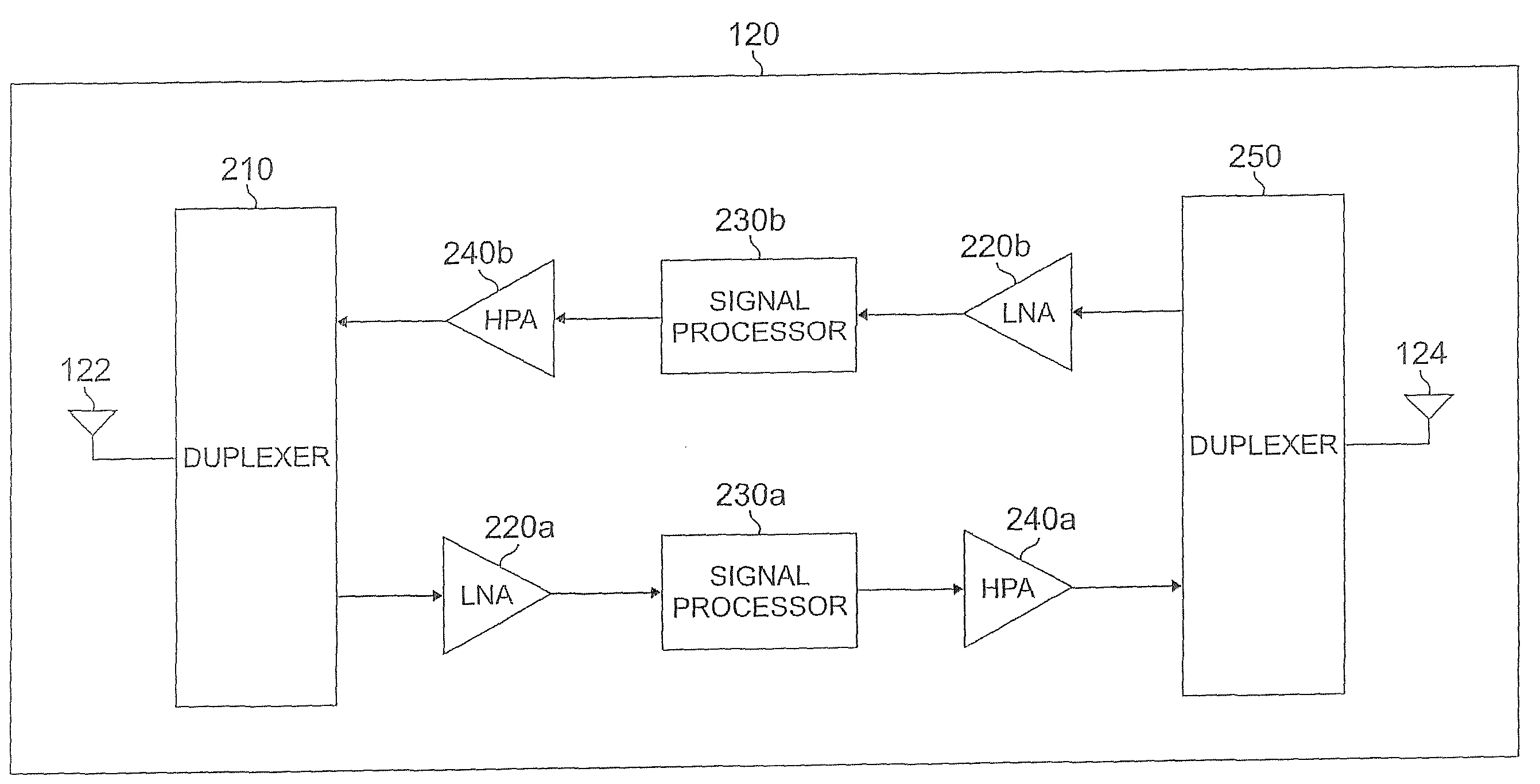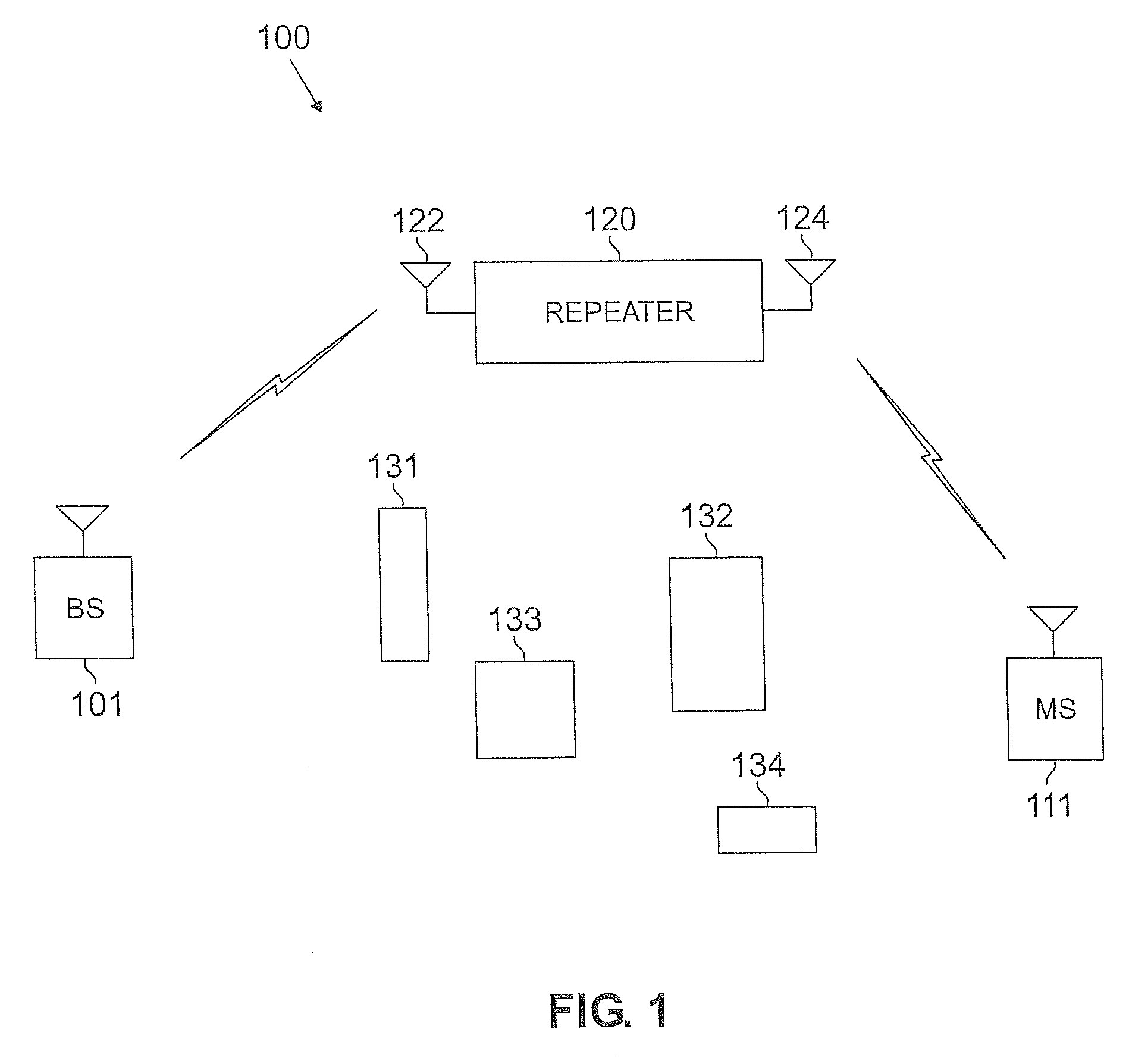Wireless repeater using cross-polarized signals to reduce feedback in an FDD wireless network
a wireless network and repeater technology, applied in the field of communication networks, can solve the problems of inability to reliably establish new connections, inadequate coverage, and persistent problems in the quality of service of any wireless network, and achieve the effect of removing time-delayed feedback or echo terms and reducing feedback
- Summary
- Abstract
- Description
- Claims
- Application Information
AI Technical Summary
Benefits of technology
Problems solved by technology
Method used
Image
Examples
Embodiment Construction
[0031]FIGS. 1 through 6, discussed below, and the various embodiments used to describe the principles of the present invention in this patent document are by way of illustration only and should not be construed in any way to limit the scope of the invention. Those skilled in the art will understand that the principles of the present invention may be implemented in any suitably arranged RF repeater transceiver.
[0032]FIG. 1 illustrates exemplary wireless network 100, which implements repeater 120 according to the principles of the present invention. Wireless network 100 comprises base station (BS) 101 and other base stations (not shown) that communicate with a plurality of mobile stations, such as mobile station (MS) 111, located in a coverage area of wireless network 100. In an advantageous embodiment of the present invention, base station (BS) 101 communicates with mobile station (MS) 111 over frequency-division duplexed (FDD) channels. By way of example, the FDD channels may use co...
PUM
 Login to View More
Login to View More Abstract
Description
Claims
Application Information
 Login to View More
Login to View More - R&D
- Intellectual Property
- Life Sciences
- Materials
- Tech Scout
- Unparalleled Data Quality
- Higher Quality Content
- 60% Fewer Hallucinations
Browse by: Latest US Patents, China's latest patents, Technical Efficacy Thesaurus, Application Domain, Technology Topic, Popular Technical Reports.
© 2025 PatSnap. All rights reserved.Legal|Privacy policy|Modern Slavery Act Transparency Statement|Sitemap|About US| Contact US: help@patsnap.com



